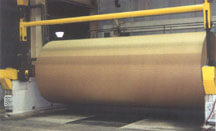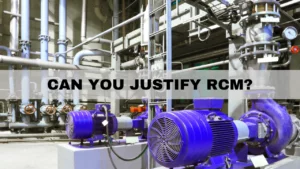Paper mill preventive maintenance achievements. The Smurfit-Stone paperboard mill at Fernandina Beach, Florida, finds opportunities to increase mill productivity and reduce costs by improving its preventive maintenance program.
In recent years, Smurfit-Stone’s Fernandina Beach mill fell from the ranks of the most cost-effective and profitable mills in the corporation. It didn’t happen as a result of increasing costs, but as a result of the company adding 20 additional mills through mergers and acquisitions.
Smurfit-stone, Fernandina Beach found itself in direct competition, not only with other companies’ mills, but also with its own sister mills.
Before 1998, Smurfit-stone, Fernandina Beach only had to be more cost-effective than the one other linerboard mill in its division. Management decided to address the new competitive situation specifically by addressing maintenance operations and costs, and equipment reliability through an improved preventive maintenance program.
Fernandina Beach is a fully integrated, ISO 9002-certified kraft linerboard mill with production capacity of 2,850 tpd. Its three machines produce liner in weights from 26 lbs. to 69 lbs, using a combination of kraft and recycled pulp.
The mill operates a large wood yard that receives both chips and round wood, batch and Kamyr digester pulp mills, a recovery system including two recovery boilers, two power boilers, two turbine generators and all the associated water and waste treatment facilities for a large mill.
Of the mill’s 495 hourly employees, 165 are maintenance mechanics, including 110 mechanical journeymen and 55 electrical/instrumentation technicians.

Three board machines at Smurfit-Stone’s Fernandina Beach mill produce linerboard in weights ranging from 26 lbs. to 69 lbs. Photograph courtesy Smurfit-Stone
Preventive Maintenance Measurement by Benchmarks
Smurfit-Stone has conducted extensive benchmarking studies of all aspects of operating costs at each of its 21 locations. In the maintenance area, internal maintenance costs, outside contract utilization, stores inventories and staffing have been compared.
Fernandina Beach managers recognized that significant reductions could be made in the mill’s maintenance costs to contribute to the its economic well-being.
Cost reductions could be made in 1) equipment reliability, 2) planning and scheduling, 3) outside services and contracts, and 4) stores inventory.
The number of occurrences that were leading to major production interruptions led to a review of the mill’s entire approach to preventive maintenance.
Management recognized that a sound preventive maintenance program was the cornerstone of a successful equipment reliability improvement effort and was directly proportional to the mill’s financial performance. The decision was made to completely revisit and revitalize the mill’s entire preventive maintenance program.
Roles and Preventive Maintenance Goals Revised
The first major initiative was to address the existing roles and responsibilities of the various maintenance groups. Maintenance tasks had been conducted by personnel in both day and shift maintenance groups.
Day personnel were to handle all maintenance issues within day shift hours and shift maintenance personnel were responsible for issues occurring during other hours. Preventive maintenance tasks were the primary responsibility of the day crew, with some tasks handed off to shift personnel.
But break-in work and “emotional” maintenance decisions often got higher priority than the preventive maintenance tasks on the schedule. Management’s answer to this problem was to form a separate group with only the responsibility for completing scheduled preventive maintenance.
Day maintenance was assigned the primary responsibility of completing corrective repairs that had been properly planned and scheduled. The entire maintenance department organization was revised to bring the entire reliability program under the direct supervision of one leader. The group was given a charter and a vision statement.
Shift maintenance in the mill was consolidated into a central concept that consists of a supervisor and seven mechanics on a 12-hour shift schedule. The intention was to take the break-in element out of the preventive maintenance equation by assigning break-in work to shift maintenance. Break-in work would be the exclusive responsibility of shift personnel.
The remainder of the department, including both mechanical and electrical/instrumentation personnel, would work out of area-based shops supported by a planning and scheduling department and a computerized maintenance management system.
In theory, all three groups were to be dedicated to particular portions of the maintenance program and would not be distracted by tasks outside their scopes. Management recognized, however, that it would take some time for this concept to work as planned.
Separating tasks into three different groups called for discipline and significant cultural change, but the goal was to minimize overlap of functions and tasks as much as possible.
Planning and Scheduling
Recognizing that a significant portion of work orders were poorly planned—or not planned at all—management undertook an initiative to improve the planning and scheduling process.
To give the day crews ample opportunity to complete corrective repairs efficiently and effectively, work orders needed to be well planned and ready for the mechanics when they received their assignments.
A new process was implemented, including an emphasis on controlling any backlog of work orders.
Maintenance Stores
An assessment of a rather high storeroom inventory revealed the urgency of stocking the correct parts in the storeroom and getting the wrong parts out of inventory. Benchmarking data showed that the inventory was considerably higher than that of comparable mills. The storeroom often issued outdated parts, no parts or the wrong parts.
But management recognized that this was the result of a weak preventive maintenance program with an inadequate planning and scheduling effort, and not the result of poor storeroom management.
In fact, the storeroom was managing quite well the parts that planners, supervisors and managers had continued to keep in inventory. Getting the stores process under control required good planning and scheduling, significant reductions in break-in work and management assurance that the storeroom had the right parts of maintenance jobs.
Implementing the Preventive Maintenance Vision
Each initiative in the revamping of the Fernandina Beach preventive maintenance program was assigned team members and a leader.
An in-depth “gap” analysis was conducted by the maintenance consulting firm of IDCON Inc. to identify and measure the differences between the mill’s maintenance practices and performance and that of high-performing maintenance organizations in world-class mills. The teams used this analysis as a tool for goal setting at Fernandina Beach.
IDCON’s services also included eight weeks of training spread over a six-month period. The goal was to provide guidance in developing a new preventive maintenance process, with training modules for both salaried and hourly personnel.
Mill management’s requirement for the program development was that it not be a consultant’s production, but that it be a process developed by mill personnel with a consultant’s assistance. In order for the process to succeed, the affected personnel had to be directly involved in and in control of the design changes.
The Challenge of Change
Lack of communication is always a great problem in an organization attempting to implement change, but it can be the easiest to correct.
The implementers of change at Fernandina Beach used many different forums to communicate the following: 1) why change needed to occur, 2) who would be affected, and 3) when the change would occur. Implementation teams went to great lengths to communicate with union leadership, management and all other supervisors and salaried employees in the organization.
Forums included departmental meetings, special ad hoc communication meetings, and written correspondence and brochures.
Changing the culture of a workplace is probably the most difficult barrier to overcome in a work force. A cultural change was definitely required at the Fernandina Beach mill. Completing preventive maintenance work is of high importance, but was often given a low priority in scheduling.
With the changes that have been made, management is continually sending the message to supervisors, planners and the hourly workforce that preventive maintenance is a high priority and will be so treated. But management also recognizes that it will take years of discipline to finally realize the benefits of placing the highest priority on completing preventive maintenance orders.
Clayton Smith is maintenance and engineering manager and George Munn is reliability supervisor at Smurfit-Stone’s Fernandina Beach mill.




